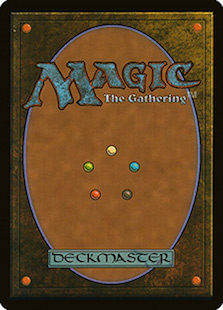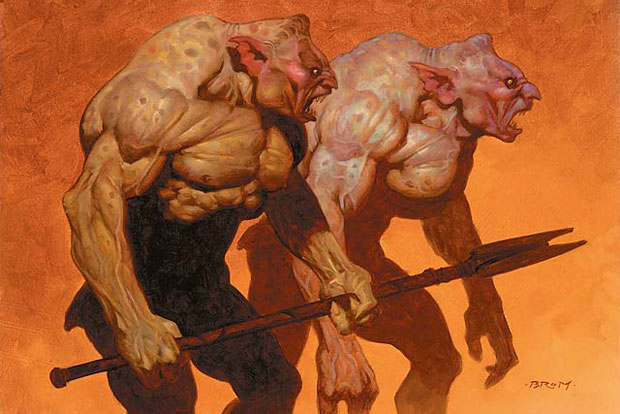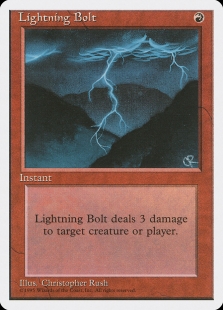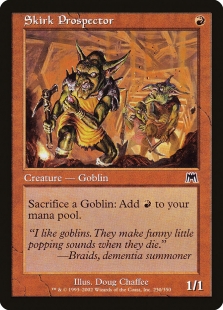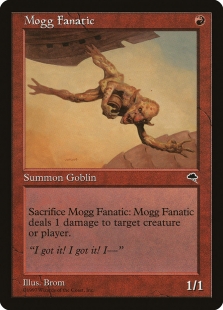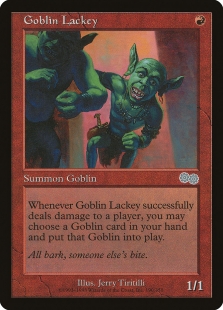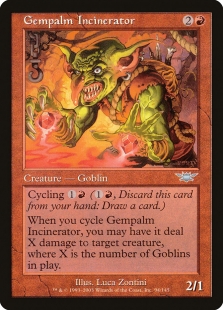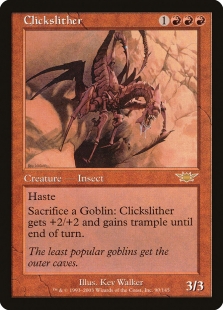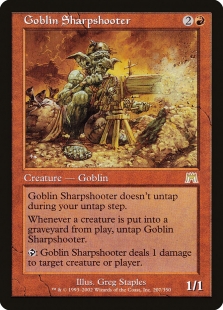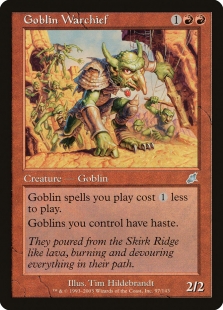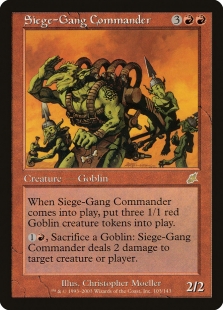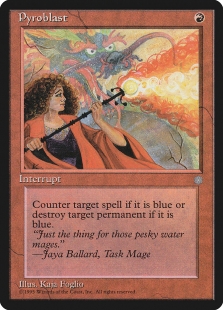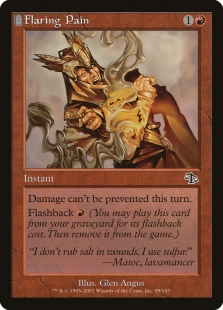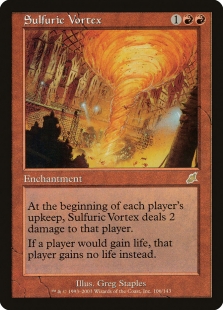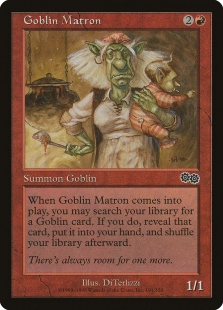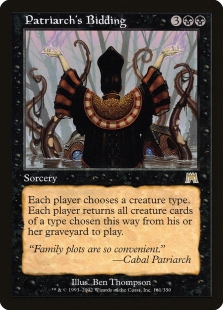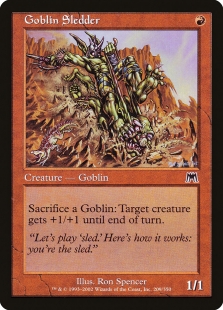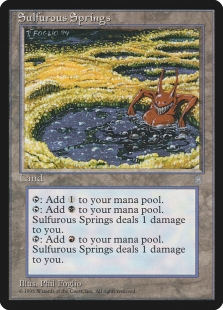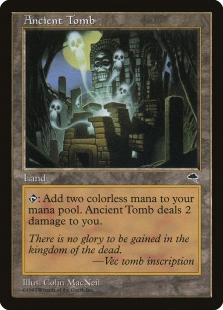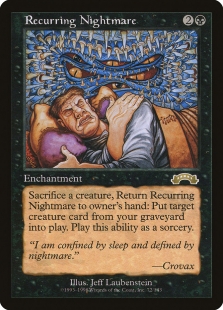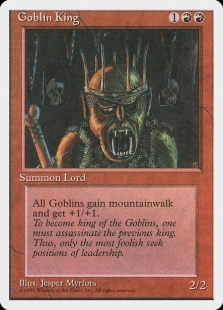Today’s guest post by Per Rönnkvist is all about ‘dem goblins. Enjoy! / Martin
Introduction
Hi everyone,
This is an in-depth article about one of the most powerful and robust decks of the Premodern format—Goblins! I’ll be covering my journey so far with this deck—all the way from Joel Larsson’s kitchen table to me playing this deck at the European Championships at Fishliver Oil Cup in Genoa.
Before heading to the good stuff I would like to make a small introduction of myself.
Even though my first memories of Magic was receiving a 4th edition starter pack for my tenth birthday (opening a Mana Vault!), I started playing competitively in 1999, when Urza’s Legacy was first released. I’ve always played with a competitive mindset combined with a love for the creative and strategic part of deckbuilding. I would say my love for deckbuilding goes further than actually playing the game itself, I love tinkering with new ideas and perfecting decklists. For as long as I’ve played competitive Magic I remember having a notebook next to my bed, almost like a diary, empyting my thoughts before falling asleep. I was exploring pretty much every good and mediocre idea that came to mind. Decklist after decklist covered the pages of my notebooks.
The outcome from a tournament has more so been the result of my efforts in deckbuilding rather than my playing skills. In reality that is not true, as playing the game most likely has a higher impact than deckbuilding, but anyway, looking back that has been my mindset for a very long time. I have a strong belief that winning a constructed event is done primarily in advance. It comes down to how good you’ve come to understand the format and how much work you’ve put into playtesting and getting to know your deck and sideboard.
As many of you reading this I’ve had my on and off’s with Magic. I stopped playing in high school in 2004. I returned in college in 2008, then quit again in 2012. After playing Magic for about ten years or so, in 2011 I finally ”broke through” managing to top 3 the Swedish Nationals that year. I’ve had the fortune of playing Worlds in San Francisco (that’s me in the white shirt in the pic below) and Pro Tour Hawaii together with Martin Berlin and Joel Larsson—two great people and also fantastic players. To say the least, managing to stay on the Pro Tour is tough and while returning to the grind in 2012 I also happened to meet my soon to be wife, which meant the end for my competitive Magic.

Fast forward: today I am 32 years of age, live in Stockholm with my wife Mikaela and my two wonderful (and demanding) twin boys at the age of three. And absolutely no time to play Magic.
You all know how this is going to end do you? I didn’t want to be that guy, but I am…
After meeting with Martin Berlin in the summer of 2018, a couple of weeks later, I somehow found myself sitting on the balcony in Joel Larsson’s apartment with a bunch of old time Magic players playing this ”new” format called Premodern. Playing this really sweet Goblins deck!
Settling for goblins
When getting introduced to Premodern this summer I even heard there was going to be a Swedish Nationals tournament in a couple of weeks as well as a European Championships! Not only did Premodern appeal to me just for the sake of playing some casual Magic: the Gathering (which was a long time ago!), but it also had the competitive elements to it.
Before I stopped playing in 2012 I learned a lot of things. One of them was the power of really getting to know your deck. As I love exploring new ideas in constructed I often tend to jump on to the very next thing, trying to stay one step ahead of the metagame. I rarely stayed with a deck for too long. That comes with a cost—a high cost—of not getting to know your deck well enough. With that in mind I decided that if I was going to play in a competitive Premodern tournament I wouldn’t be jumping back and forth with the small amount of time I had available. The format has a huge card pool and is to a large extent completely unknown—there are still tons of powerful decks out there that we don’t even know exist yet! Take Erik Sundberg’s fantastic brew for example – which he took to a second place finish at the Euro Champs.
In a wide-open format where you don’t know what you’re up against it is a good idea to focus your energy on known factors such as your own strategy, rather than trying to find the most suitable answers to everyone’s different brews. Combining that with the fact that I both have prior experience playing goblins and I love casting Goblin Ringleaders, the choice was easy. I was going to focus all my energy in trying to make the best Goblins deck possible.
The past
The early versions of Goblins that I stumbled upon were the decklists referred to at the deck section of this website as well as the one referred to in one of Joel’s articles on Channel Fireball.
Although the decks looked fine, I understood these were early drafts and probably a lot of possible tuning to be made. Also I initially had a different view on how to build a Goblins deck.
Containing cards like Lightning Bolt, Mogg Fanatic, Clickslither and Siege-Gang Commander, the deck looked a lot like a beatdown deck. I remember playing Goblins back in old extended where the deck functioned a lot more as some sort of explosive utility/card advantage deck, which also happened to randomly win on the back of Goblin Piledriver. Skirk Prospector, Mogg War Marshal, Goblin Matron, Goblin Warchief and Goblin Ringleader made up for quite a powerful mana and card advantage engine. Chrome Mox also was a fantastic card in the deck, since you could speed up your games by one turn, and also catch up the loss of card advantage via multiple Goblin Ringleaders or Goblin Matrons into Ringleader.
This was my vision when I started browsing the web while at the same time getting more familiar with the Premodern cardpool. To my big disappointment neither Mogg War Marshal, Frogtosser Banneret nor Chrome Mox were legal. However I stumbled upon Fecundity and thought that I was onto something. And maybe you could do something crazy with Food Chain? And Mox Diamondis a good replacement for Chrome Mox. Right?
I put together a list and headed down to my first local Premodern meetup. As previous writers have already established: Premodern is not Extended, Type 1, or any other format. Premodern is Premodern. My amazing new tech looked good on paper but didn’t work out at all. Mox Diamond was good roughly one out of every four opening hands, and it wasn’t really the best card to draw into after turn 2 or 3, and it definitively didn’t help my Goblin Ringleaders playing 4 Mox Diamond plus 25 lands. Fecundity was very situational and it was hardly a combo deck I had built. I’d much rather just cast a goblin and go for the throat.
The combo elements didn’t work out. But the raw power of curving out with Goblins felt almost absurd. Have you ever played with Goblin Lackey? I hadn’t before playing Premodern. I almost get the feeling I need to apologize for myself when drawing and playing it on turn one. It is almost like playing a one-card combo deck with a solid backup plan in the form of a very aggressive beatdown plan. In approximately 25%(?) of the games you are playing it on turn one. If your opponent lets it slide it’s very difficult for them to get back into the game. It’s almost as if you are playing different formats.
When I got home I quickly cut the subpar ”combo” pieces and focused more on maximizing Goblin Lackey, Goblin Ringleader and Goblin Piledriver.
In a couple of weeks, with some help from both Joel and Martin, I landed in something pretty close to what both me and Joel played at the Swedish Nationals:
To me, this deck is all about maximizing synergy, making your strong cards even stronger. I wanted more removal to clear the way for Goblin Lackey, therefore adding some Mogg Fanatics and adding two more Gempalm Incinerator. I wanted as many goblins as possible getting the most out of Goblin Ringleader, ending up with 35 Goblins maindeck. I wanted more one-drops for my Goblin Piledriver and more Ringleaders coming via Goblin Matron. I also wanted to smooth out the curve as I only had one two-drop in the form of Goblin Piledriver. It wasn’t very impressive playing a one-drop on turn 1, then another one-drop on turn 2 just because I hadn’t drawn the Piledriver. I looked towards Sparksmith as it’s a very powerful card, however the creature-light meta didn’t favor it, so instead I had to surrender to more copies of Goblin Sledder and Mogg Fanatic.
I had also put a lot of effort into the sideboard. As you can see the maindeck is mono-red and early on I was swinging back and forth between playing green and black in the sideboard. Green offered a catch-all in the form of Naturalize to bring in versus all the hate I was worried about: Circle of Protection: Red, Engineered Plague, Humility, Oath of Druids and maybe some other unknown threats I didn’t even know existed. A couple of Fecundity could also help out in the grindy matchups where I would face Wrath of God, Engineered Plague and lots of spot removal. And maybe Caller of the Claw had a chance of making it.
Black, on the other hand, offered Duress—a flexible catch-all which only costs one mana. Duress can’t handle anything that has already hit the board, however it has a huge upside compared to Naturalize. It is a proactive rather than a reactive card. How awkward wouldn’t it be when my opponent plays Engineered Plague, swiped my board, then I Naturalize it one turn later. My opponent would already have put me in a tough spot at that point. And what if he didn’t draw the Engineered Plague? It would be just as awkward sitting with the Naturalize in hand waiting for my opponent to cast a Plague (and wreck me) so that I then in return would be able to destroy it. Duress would be able to snatch that Swords to Plowshares for my Goblin Lackey or that Counterspell to be able to resolve my Goblin Ringleader.
Dralnu’s Crusade however, was the big finding.
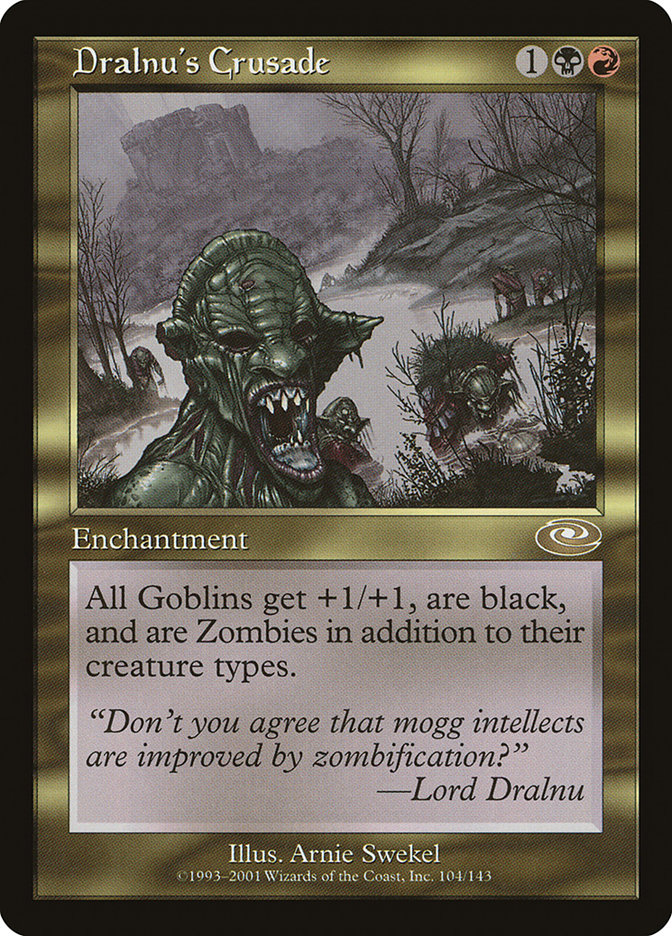
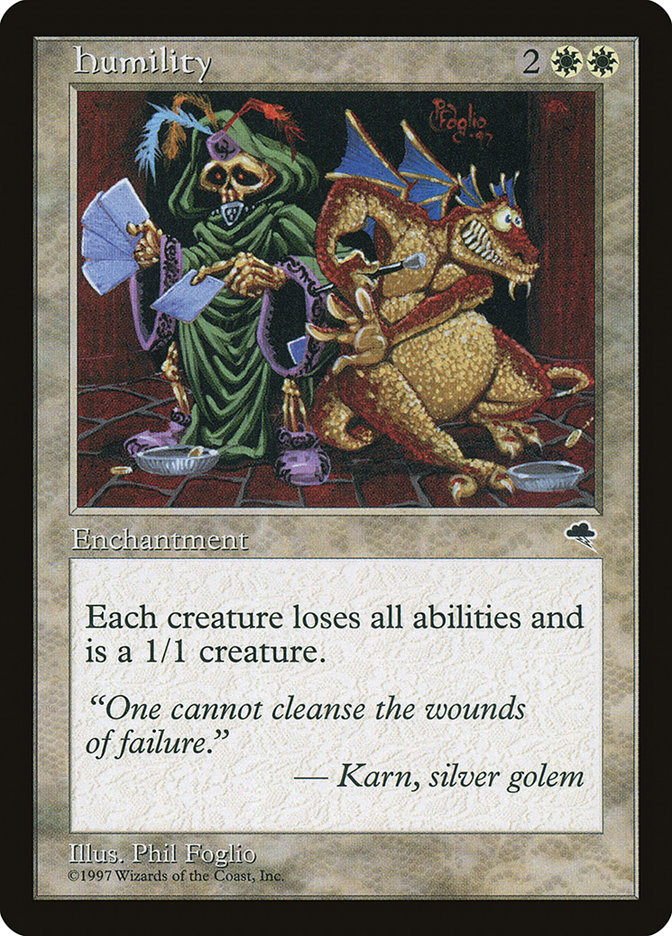

I can’t remember how many times this card has won me games. Dralnu’s Crusade answers a lot of the relevant big threats for goblins after sideboard, mainly Circle of Protection: Red, Engineered Plague and Sphere of Law. But it also helps out versus Humility, Pyroclasm, Worship and probably something more that I don’t know about. Did I mention it’s also a proactive card? Worst case scenario, it is a Glorious Anthem in my weenie deck.
I’m still waiting for someone to next level me playing Light of Day the turn after I play my Dralnu’s Crusade…
The days before the Swedish Nationals I also did some cool findings in the form of Recurring Nightmare versus the more controlling and grindy matchups. Imagine chaining Goblin Ringleader, Siege-Gang Commander and Goblin Matron! It also can’t be countered by Hydroblast which is quite huge.
I did fine at Swedish Nationals, losing to enchantress and Solitary Confinement in the semi-finals. A card I hadn’t given much thought other than ”I can always Duress it”. Mikael Magnusson enlightened me after the tournament that Anarchy would solve that problem as well as Humility, which was great input.
The present
Going in to the Swedish Nationals I thought I had come a long way with the deck. Afterwards, however, I realized there was a lot more to be done.
Martin Berlin had suggested cutting one or two Skirk Prospector (which I thought sounded absolutely crazy, remembering what kind of a monster the card has been in the past). He was right, and in a couple of weeks I finally cut all four of them. They rarely had a big impact and lacked the synergy for it to be powerful. The best thing it could do was to ramp into Goblin Ringleader or made it possible to sacrifice your whole team and dealing some damage via Siege-Gang Commander, which wasn’t very exciting. To be fair it’s kind of nice versus Illusions of Grandeur, but no one plays that card. Also, Mogg Fanatic proved to be a very strong card in the mirror as well as versus Sligh. It also kills mana-birds and elves coming out of the green decks.
When not curving out the deck could at times feel a bit clunky and Goblin Matron didn’t at all help with that. Goblin Sharpshooter would be a key-card in the mirror, however Goblins made up for such a small part of the metagame and there was not a great deal of creatures to be seen. Ancient Tomb was fine, but cutting Matron made it lose its appeal. Swamp was the worst card in the deck by far, and it was not worth having two of them to be able to make it easier to cast Patriarch’s Bidding with already having four Siege-Gang Commanders at casting cost five.
Regarding the sideboard: Duress overperformed, I would almost consider maindecking it as I sideboarded it in almost every game. Pyroblast was awkward. The best it did was to counter Fact or Fiction coming out of the control decks. It was very awkward when sitting with a Goblin Ringleader or a Siege-Gang Commander in hand wanting to draw one more land to be able to cast them. Then one more land to be able to have counter backup. Again with the whole idea of playing proactive cards… Recurring Nightmare was kind of sweet and I came to experiment with it a bit going forward. And Pyrokinesis was insane versus the red matchups and great versus some green decks as well.
So… leading up to Euro Champs there was a lot of tuning to be done. Especially with the sideboard which wasn’t all that easy.
The difficult part when it comes to sideboarding with a deck like Goblins is the fact that for every goblin you side out, you lose a percentage of synergy. Your strong cards become weaker. Siding out twelve cards versus control (where I was at one point) makes Goblin Ringleader, your best card, a lot worse. That is the dilemma. After a lot of tweaking and some testing I decided that the right thing to do was to narrow down my sideboard cards making them fewer but stronger versus what I found problematic games 2 and 3. I was even considering removing Duress at one point (however Joel talked some sense into me) versus the UW control decks just to sideboard in Dralnu’s Crusade and Anarchy. In reality however, the deck became clunky and holding an Anarchy in hand isn’t really where you want to be as a aggro player versus control. They can easily just grind you out with Pyroblasts and Fact or Fictions instead of playing that one Humility in their deck.
Here are some other cards I considered that didn’t make it:
- Oath of Ghouls
- Null Rod
- Blood Moon
- Recurring Nightmare
- Cursed Scroll
- Phyrexian Processor
- Cabal Therapy
- Cabal Slaver
A lof of these cards are interesting because they dodge Pyroblasts and because they handle the anti-red cards or Engineered Plague.
Moving on to the maindeck. There was one crucial piece to take it to the next level—the two mana casting cost goblin. Believe me, there are a lot of crappy two mana goblins in Premodern!
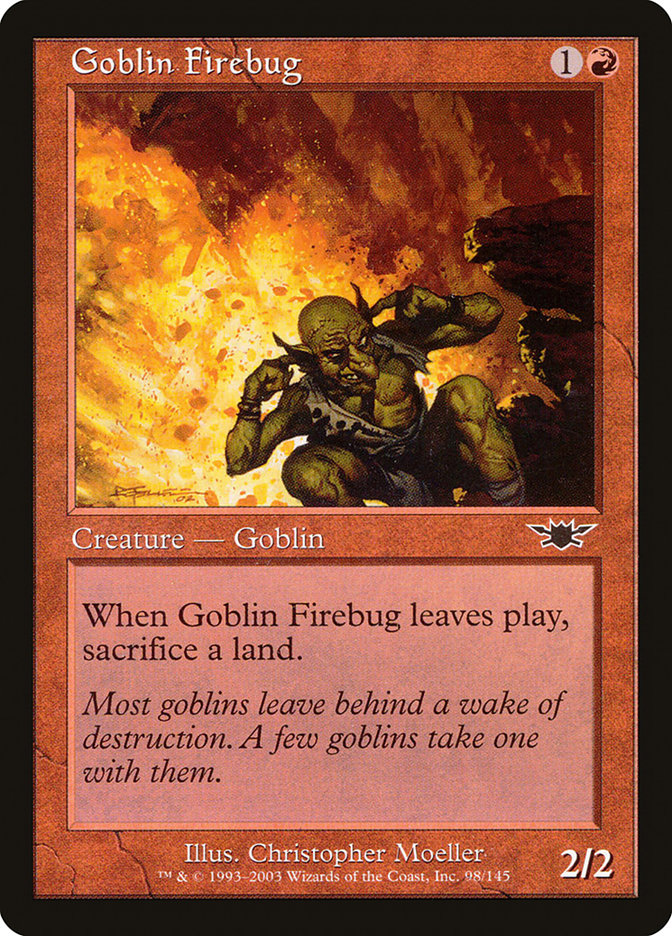
To solve this issue I must now reveal to you one of my greatest deckbuilding secrets of all time—I read the fucking card. I browsed the card search engine on this website over and over again. I knew it was there. Somewhere. Then one day it finally revealed itself:
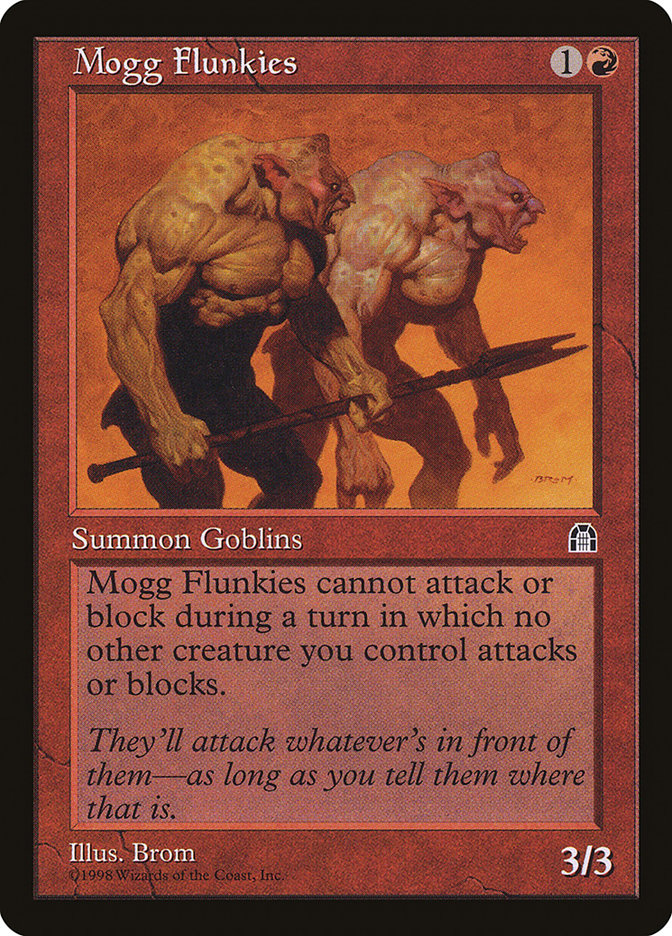
Okay, so it’s not a Goblin Piledriver, but hey, it’s a Watchwolf! One who survives Engineered Plague, Pyroclasm and can be hasted with a Goblin Warchief. Not all that bad in a card pool full of Goblin Firebugs.
The deck now felt fast, smooth and had a really nasty game 1 against pretty much any deck.
Here is the final decklist I ended up with going into the European Championships:
I felt super-confident going into the tournament. Although I hadn’t tested enough against both Sligh and UW Standstill I still felt I had a fair chance against those decks, and felt confident against the rest of the field.
Going into round 5 I was 4–1, having lost to Erik Sundberg’s Pink Prison in round 3 (horrible matchup, if you’ve read his article you can see he completely next-leveled me). In the last round I had the points to draw into top 8 but was paired down versis Stefano Mannella and his UW Standstill. I lost, leaving me in ninth place.
The future
I am very happy with the deck and I haven’t really given it much thought since Euro Champs. Of course there are still a lot of variations of this deck left to explore. Maybe someone can break Fecundity and Skirk Prospector? Some hyper-aggressive version with Reckless Charge? If the metagame is filled with control-decks I’d consider going mono-red for Goblin Matrons and Ancient Tombs and maybe some Phyrexian Processors games 2 and 3.
One thing is for sure, though, Goblins will still be a force to be reckoned with! And listen to Martin and don’t skimp on those one mana removals for Goblin Lackey 😊
– Per
P.S. Many thanks to Martin, Joel and everyone else for all their great input to the deck!
